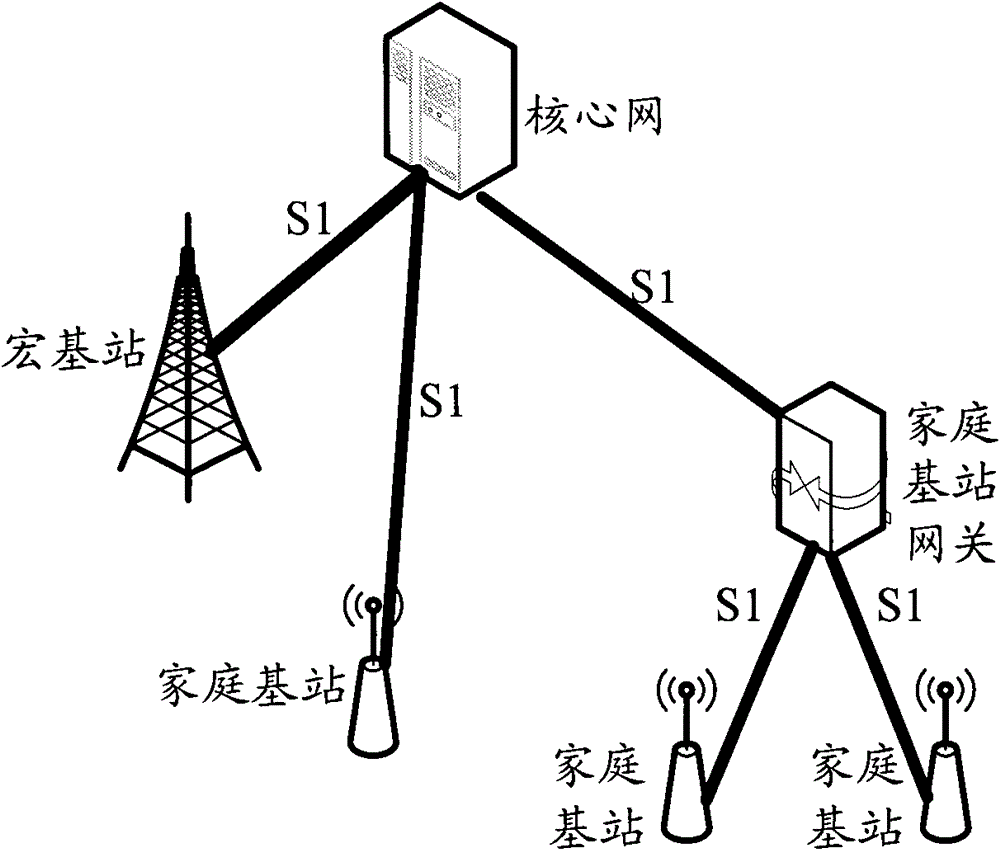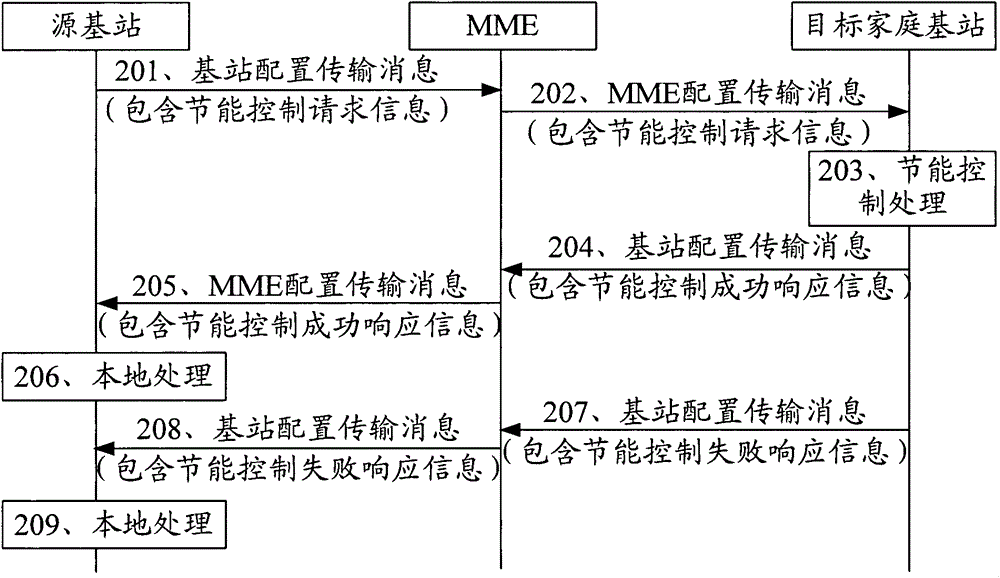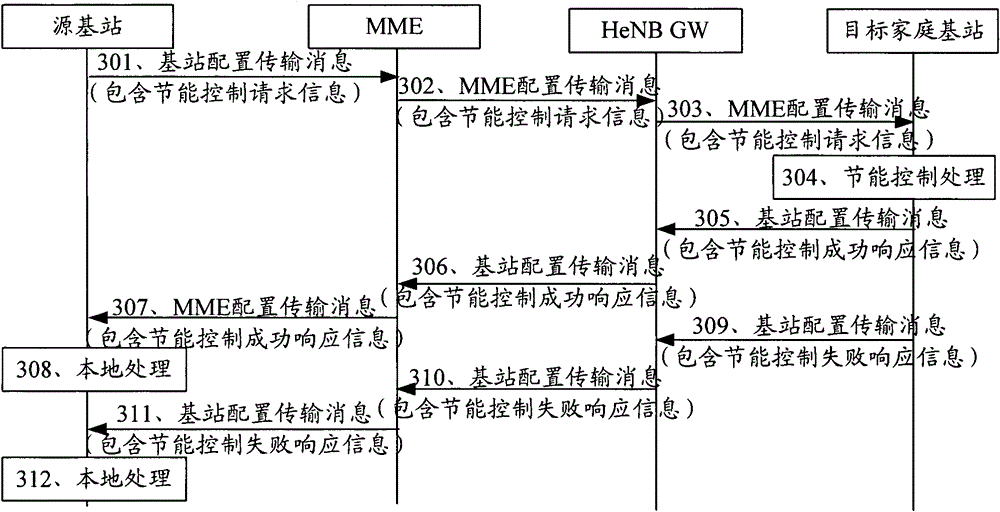Method and device for energy-saving control in home base station environment
A technology of energy-saving control and home base station, which is applied in the direction of reducing energy consumption, advanced technology, power management, etc., to achieve the effect of sleep or wake-up and effective energy saving of the network
- Summary
- Abstract
- Description
- Claims
- Application Information
AI Technical Summary
Problems solved by technology
Method used
Image
Examples
Embodiment 1
[0037] figure 2 It is a flowchart of a method for implementing energy-saving control in a home base station environment in Embodiment 1 of the present invention. In this embodiment, the source base station sends an energy-saving control request to the target home base station, and the request is forwarded to the target through the mobility management entity (MME) of the core network For the home base station, the energy-saving control messages in this embodiment are all implemented based on the S1 interface, and the specific steps are as follows:
[0038] Step 201, the source base station sends an energy-saving control request message to the MME, and the message carries: message type, target base station information, source base station information, and energy-saving control request type;
[0039] The source base station may be a macro base station or a home base station;
[0040] The message type is used to distinguish the type of the current message.
[0041] The energy-s...
Embodiment 2
[0066] image 3 It is a flow chart of the method for implementing energy-saving control in the home base station environment in Embodiment 2 of the present invention. In this embodiment, the source base station sends an energy-saving control request to the target home base station, and the request is forwarded to the target home base station gateway through the MME, and then the target home base station The gateway forwards to the target Femtocell. In this embodiment, the energy-saving control messages are all implemented based on the S1 interface, and the specific steps are as follows:
[0067] Step 301, the source base station sends an energy-saving control request message to the MME, and the message carries: message type, target base station information, source base station information, and energy-saving control request type;
[0068] The source base station may be a macro base station or a home base station;
[0069] The message type is used to distinguish what the curre...
Embodiment 3
[0099] Figure 4 It is a flowchart of a method for implementing energy-saving control in a home base station environment in Embodiment 3 of the present invention. This embodiment is aimed at the scenario where the target home base station deletes the S1 interface when receiving a sleep request. The specific steps are as follows:
[0100] Sleep process:
[0101] Step 401, when the MME or the Femtocell gateway needs to notify the Femtocell to go into sleep mode, the MME or the Femtocell gateway sends a dormancy request to the target Femtocell;
[0102] The dormancy request is sent to the target home base station to be awakened through a RESET message of the S1 interface or newly added S1 interface signaling, which includes dormancy indication information;
[0103] Step 402, the target home base station performs a sleep operation after receiving the sleep request, and if the sleep operation is successful, the home base station deletes the S1 interface;
[0104] Wake up process: ...
PUM
 Login to View More
Login to View More Abstract
Description
Claims
Application Information
 Login to View More
Login to View More - R&D Engineer
- R&D Manager
- IP Professional
- Industry Leading Data Capabilities
- Powerful AI technology
- Patent DNA Extraction
Browse by: Latest US Patents, China's latest patents, Technical Efficacy Thesaurus, Application Domain, Technology Topic, Popular Technical Reports.
© 2024 PatSnap. All rights reserved.Legal|Privacy policy|Modern Slavery Act Transparency Statement|Sitemap|About US| Contact US: help@patsnap.com










